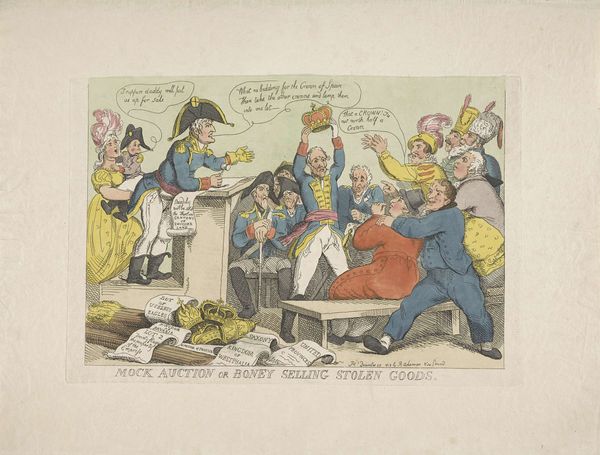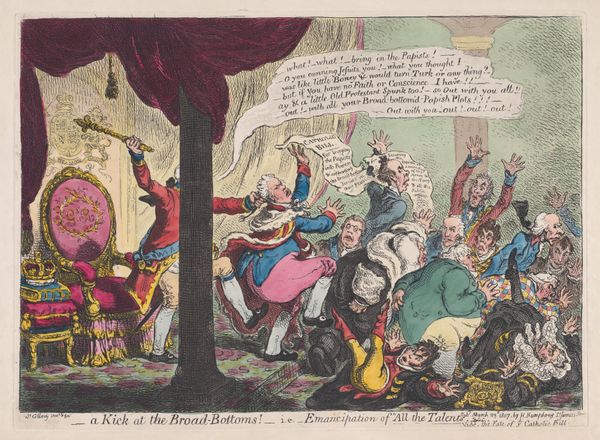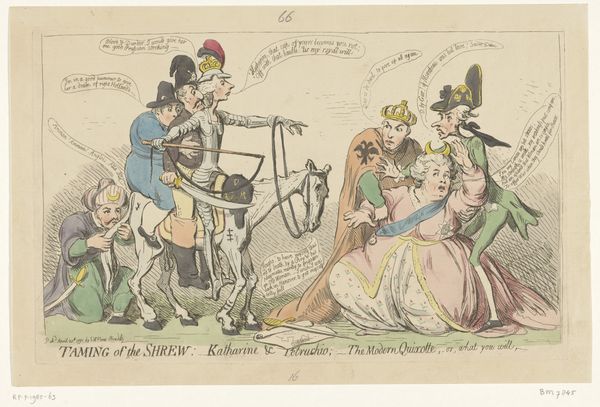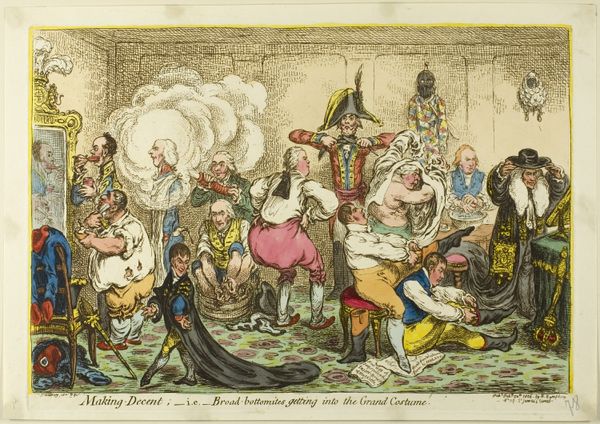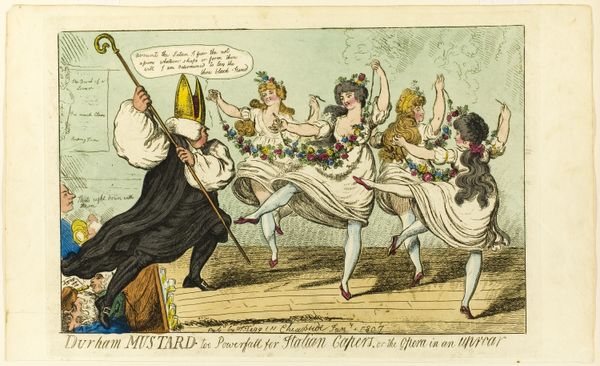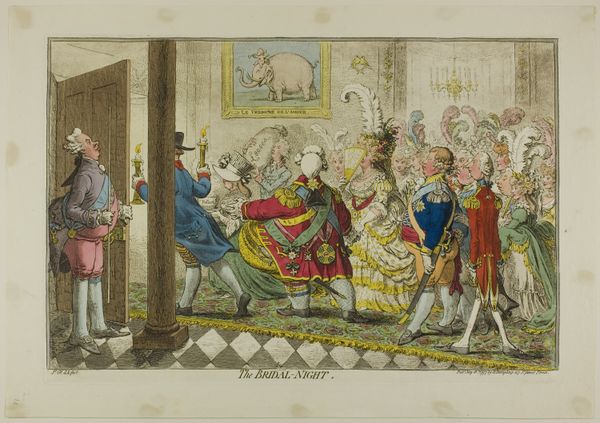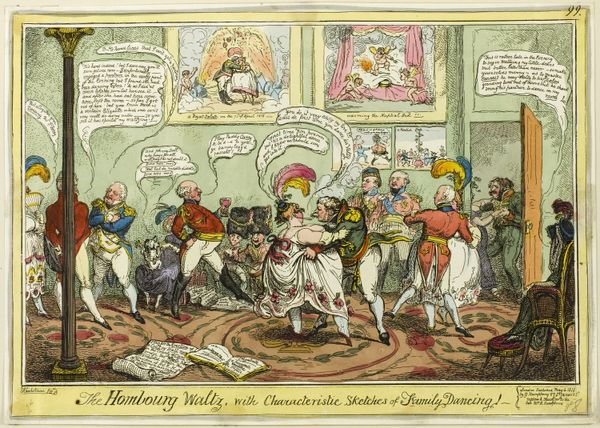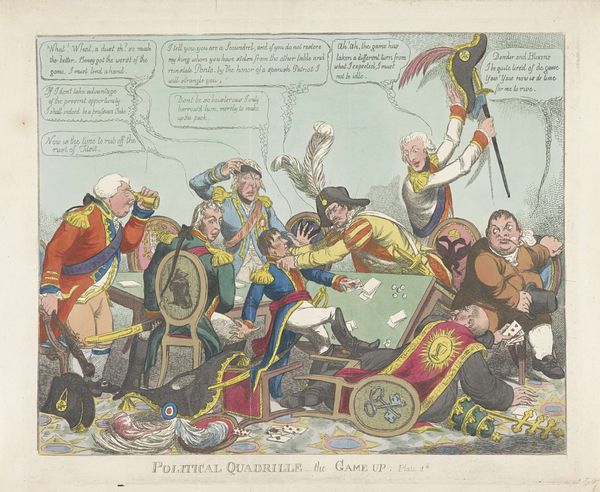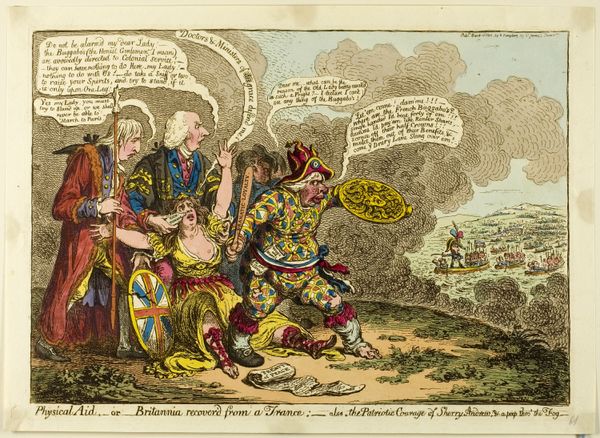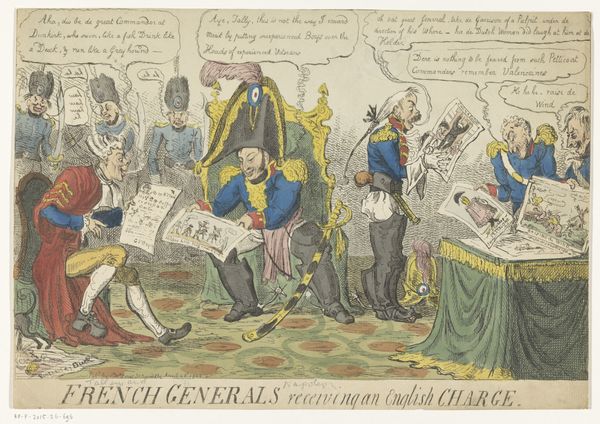
Copyright: National Gallery of Art: CC0 1.0
Editor: Here we have "The Times," an etching and engraving by Thomas Rowlandson, circa 1783. The allegorical figures seem to clash and compete with each other! How do you approach a piece like this? Curator: Looking at the lines and their relative lightness and darkness produced by the etching process, note how Rowlandson utilizes the material possibilities of engraving to delineate social standing. The physical act of scoring the plate—a piece of zinc or copper, let's imagine—became a form of cultural inscription. Where did Rowlandson source his plates? Who printed them? For what price did they circulate amongst the classes? The answers to these questions reveal more about the manufacturing of social difference and the accessibility of political critique in late 18th century England. Editor: That's fascinating. So you’re less focused on decoding the allegory itself, and more on… who had access to these images and how they were made? Curator: Exactly! Note the way Rowlandson’s technique mirrors the subject; consider the layers of labor embedded in its production. This print isn't simply "art"; it’s a commodity circulated within a specific economic and social network. Think about who had the means to buy prints, and how that impacted public opinion. This makes the consumption as vital as the symbolic intent! Editor: So, understanding the economic backdrop helps decode the artwork, rather than just focusing on aesthetics or the artist’s intent. Curator: Precisely. And this approach can broaden our perspectives not only of the work's origin but also the effects on audiences within that given time. Editor: It reframes it, from a snapshot of the times to being part of those times! Thanks!
Comments
No comments
Be the first to comment and join the conversation on the ultimate creative platform.
